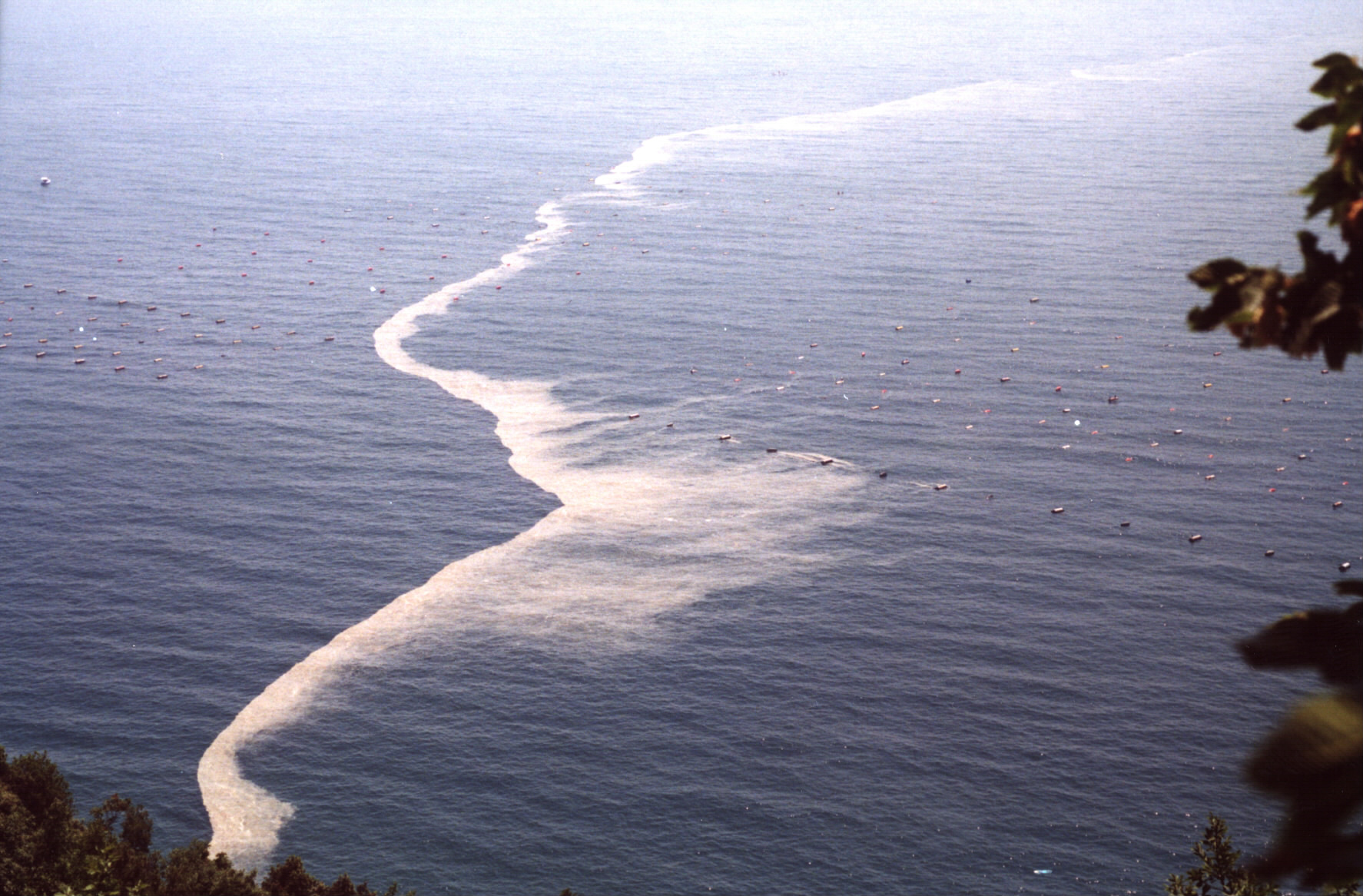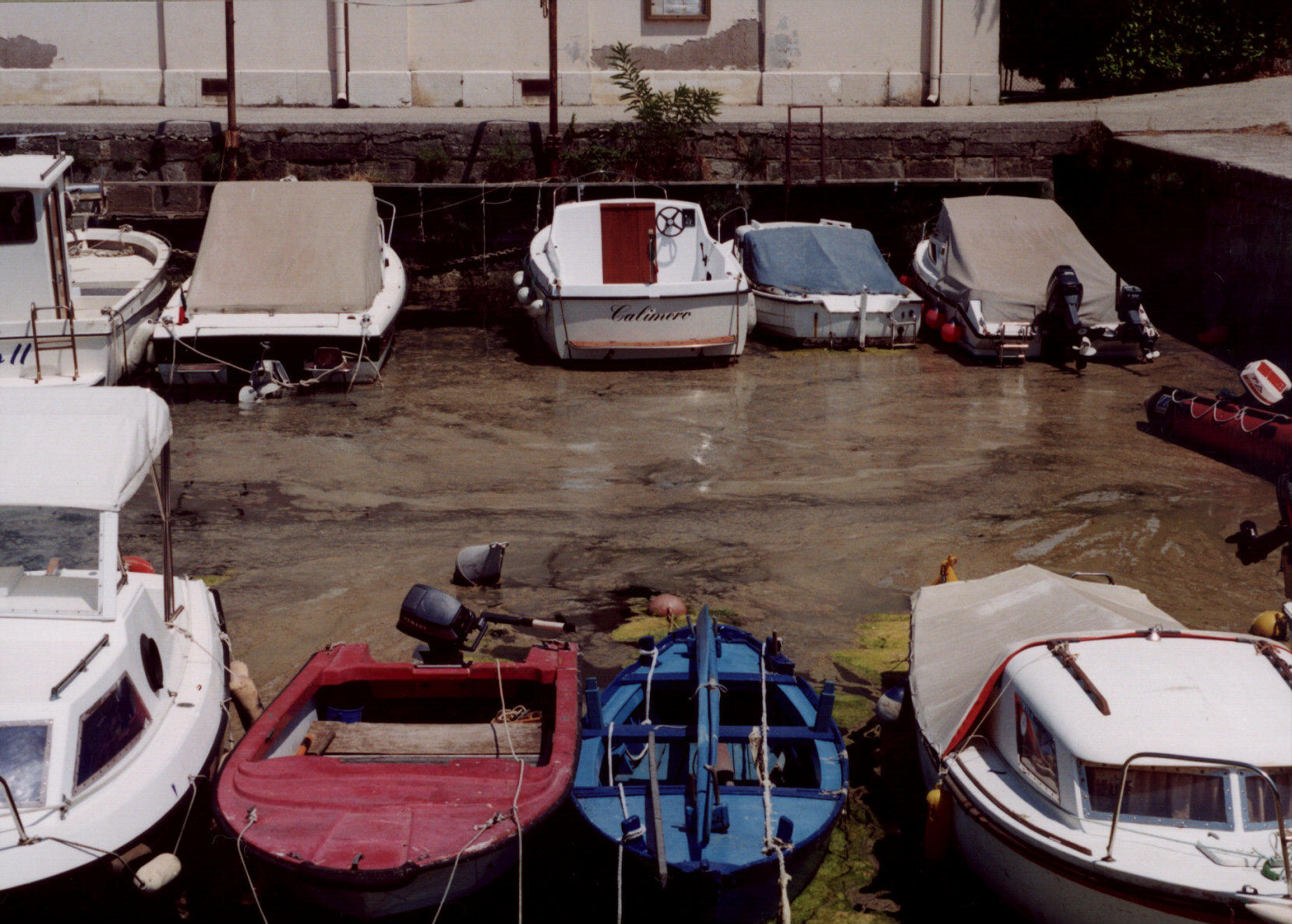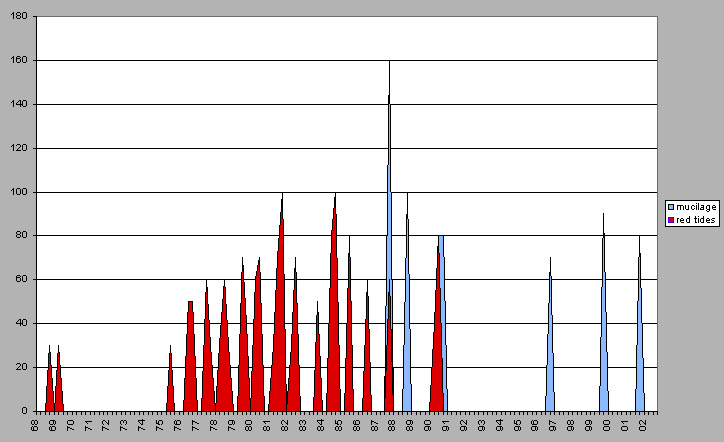


 |  |  | 18.7 Mucilage Phenomena |
The accumulation of surface mats of mucus are frequent in the northern Adriatic over the last 15 years, inconveniencing coastal inhabitants, reducing tourism, and affecting benthic communities (Figures 3 4).


The recent history of `mare sporco' may indicate a basic shift in environmental conditions from those generally favorable to post-spring dinoflagellate blooms to those favoring elevated saccharide production in nutrient-limited diatom populations (Figure).

The accumulation of large floating masses of mucilage in the northern Adriatic has been documented since 1729. These masses are large complexes of gel-like heteropolysaccharides with glucose the dominant monosaccharide followed by mannose, fructose, galactose, arabinose, ribose, xylose, and fucose. With age, α-glucosidic bonds give way to β-glucosidic linkages, characteristic of refractory polymeric saccharides. Bacteria capsular material is also suggested as a source of heteropolysaccharides as mucilage accumulates. Lipids are found in trace amounts in the matrices while C to N ratios vary widely from about 3, suggesting nitrogen enrichment to 29, indicative of nitrogen-deficient conditions.
Mucilage events have been noted in the northern Adriatic since 1729, followed by events in 1872, 1880, 1891, 1901,1903, 1905, 1920, 1921, 1922, 1924, 1929, 1930, 1949, possibly 1951, and most recent episodes in 1988, 1989, 1991, 1997, 2000 and 2002. In 1976 and 1983, mucilage accumulation was isolated in the Kvarner region. In 1988, 1989, and 1991, the large aggregations of gelatinous masses were noted throughout the Northern Adriatic, spreading along the eastern and western coasts; in 1990, it occurred only in the Kvarner area. In 1997, mucilage was also noted although less visible in the largest part of the northern basin areas than in the other regions. In 2000 and 2002 it was mostly confined in the intermediate layers and few surface mats were noticed.
In general, `mare sporco' is observed in spring-summer following the spring diatom bloom. There are some data to suggest that areas characterized by early annual minima in flow (e.g., Kvarner region) are typified by earliest mucilage formation as northeastern and eastern regions were the sites for first observation of mucilage in 1988, 1989, 1991, and 1997, usually June-July. Mucilage eventually becomes most concentrated along frontal systems with time, particularly well developed in the western northern Adriatic off the Po delta. Recent findings suggest that the first accumulation might occur in a central nucleus of intermediate water derived from modified LIW intrusions.
Spatial distribution of mucilage in the system is governed by several forces. Vertical distributions are determined from the difference between densities attributable to increasing particle scavenging by the aggregates with time versus buoyancy derived from gas bubble formation in the mucilage.
Once formed, mucilage in the surface mixed layer is moved throughout the NA as a function of winds, the eddy circulation pattern, and surface horizontal current velocities below 20 cm s-1.
 |  |  | 18.7 Mucilage Phenomena |